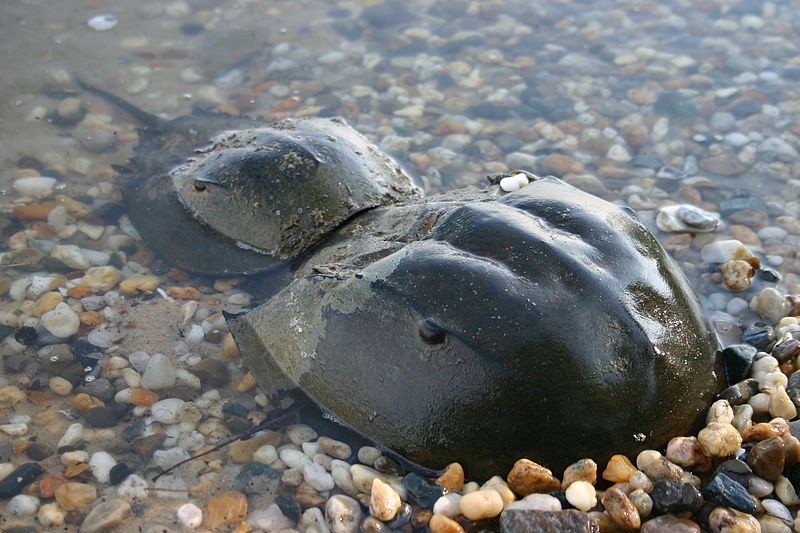Blood from a horseshoe crab saves lives. Can we keep these creatures safe from us, humans? The entire effects of the industry are yet unknown, although humans rely on animal blood for laboratory testing.

The horseshoe crab seems remarkably feeble for such a hardy creature.
A Particularly Resilient Creature
One animal's ten legs, which resemble lobsters, squirm in the air as it is beached on a desolate Delaware beachfront after climbing ashore to mate. The crab repeatedly folds its spear-like tail into its shell in an unsuccessful attempt to correct itself. Soon, it is worn out.
Slowly, it sags its tail down toward the beach.
Numerous other crabs in identical situations are scattered around the sandy shore. Others will perish, while the tide or a passing person will save some.
Increased Demand

As the global demand for their blue blood, extracted for biomedical use worldwide, grow, even those who manage to live may eventually face increased challenges. The toxin-sensitive blood is the only known natural source of amebocyte lysate, a clotting agent used to identify harmful endotoxins in various human medical items, including insulin, intravenous devices, and COVID vaccinations of arachnids.
Since at least 450 million years ago, far before the dinosaur era, the Atlantic horseshoe crab and three Asian horseshoe crab species have continued to live substantially unaltered. However, according to conservation organizations and biomedical businesses, the declining numbers of wild horseshoe crabs in Asia, which are made worse by rising demand in the Asia-Pacific biomedical market, threaten further to shift the sector to the Atlantic horseshoe crab.
Because there is evidence that the population of Atlantic horseshoe crabs is dwindling, the International Union for the Conservation of Nature, which assesses the conservation status of animals, views the crabs as being vulnerable. However, it is still difficult to determine the full effects of horseshoe crab bleedings and consequent death, especially when added to other stressors like climate change, soil erosion, and fishing for the bait business.
One of the five American businesses that annually collects and bleeds Atlantic horseshoe crabs before releasing them back into the ocean is Lonza. A recent paper issued a warning that the Atlantic species may be under "too severe a load" due to the rise of personalized medicine, including cell and gene treatments, which is partially to blame for the growing demand for horseshoe crab blood.
Horsehoe Crab Overexploitation
The number of horseshoe crab bleedings produced by American businesses has already been rising yearly. Nearly 700,000 horseshoe crabs were caught all along the Atlantic coastline in 2020 and sent to labs to be bled. The Atlantic States Marine Fisheries Commission (ASMFC), which regulates the horseshoe crab business, put the death toll above 100,000.
In contrast, just 480,000 Atlantic horseshoe crabs were caught that year, and around 69,000 perished. The yearly death tolls account for both reported fatalities and a projected unobserved mortality rate of 15%, while some critics argue that this figure does not fully account for associated deaths. According to one study, the unseen fatality rate from bleedings was greater, at 30%, partly since prior works did not accurately reflect real crab handling techniques.
Overused for Gains
Given that there is a synthetic substitute for amebocyte lysate called recombinant factor C (rFC), the growing cost of the crab-bleeding industry raises concerns about our responsibilities to the creatures that provide life-saving materials for human benefit, according to Christian Hunt, who oversees horseshoe crab policy at Defenders of Wildlife.
It's the Wild West for the biomedical sector, he claims, without proper control of horseshoe crab bleedings and results.
© 2025 NatureWorldNews.com All rights reserved. Do not reproduce without permission.





